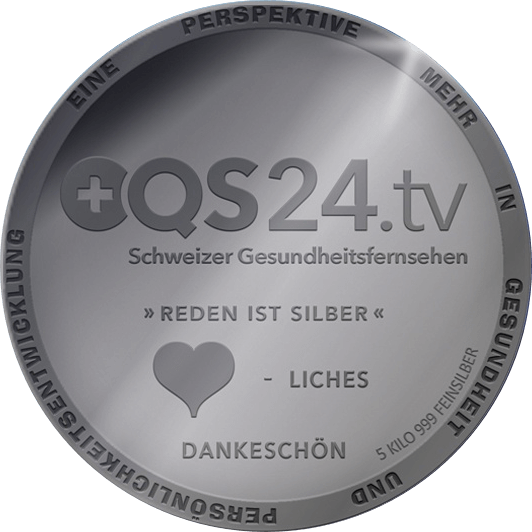The method is based on the knowledge that the iris of the eye shares one common nerve connection with all other body parts and organs. Therefore, diseases and disorders are visible in different structures of the iris, such as pigmented spots (dark spot on the iris), iris discoloration, stripes or rings.
What you can expect from an iris reading
With the help of iridology, we can see the constitutional or hereditary predispositions, and pick up on acute symptoms of specific disease predispositions long before the disease manifests itself.
The color of the iris depends on the pigment content of the membrane layers. From the color, we can then draw conclusions on the constitution of the human being. There are three different constitutions (which also have different individual types):
- purely lymphatic (blue or gray iris) – susceptible to disease in the region of the lymphatic system and the muscles
- purely hematogenous (brown iris) – circulatory and blood diseases are prevalent
- Mixed constitution (greenish-brown or brown iris) – liver and stomach disorders are common
Iridology is very helpful to understand and potentially diagnose an illness through the eyes. After all, the eyes are the mirror of the soul… and of your body!
Some common iris differences include:
Hydrogenic type occurs in all constitutions and can be recognized by whitish or whitish-yellow spots on the iris. Those with blue or gray irises have a disease tendency to catarrh, bronchitis, asthma, and eczema. Those with brown irises are susceptible to rheumatism and eczema.
Connective tissue type also comes in all constitutions and is recognizable by the so-called ghost Iris, in which the upper sheet may be partially dissolved or circular. This type is prone to fractures, scoliosis, varicose veins, hemorrhoids and glandular weakness.
Neurogenic type occurs in those with blue and gray irises. Those with this type typically have wide pupils and many finely arranged fibers in the neural network. Those with this type have a disease tendency to dizziness, fainting, irritable stomach and gall bladder, diarrhea, cramps, and psychosomatic problems.
Masked-tetanic type is shown by circular rings, which are associated with solar radiation. This type tends to colic disease, stomach or bowel problems, gallbladder problems, circulatory problems, anxiety, such as agoraphobia, shyness or depression.
Psoric type occurs in all brown irises and is recognizable by its characteristic snuff or pepper grain pigments. This type is susceptible to disorders in the stomach, intestine, liver, and spleen.




